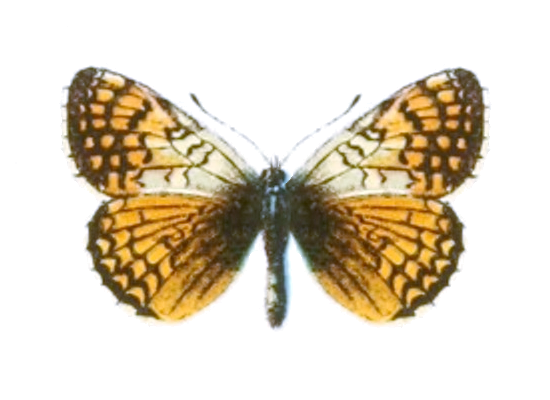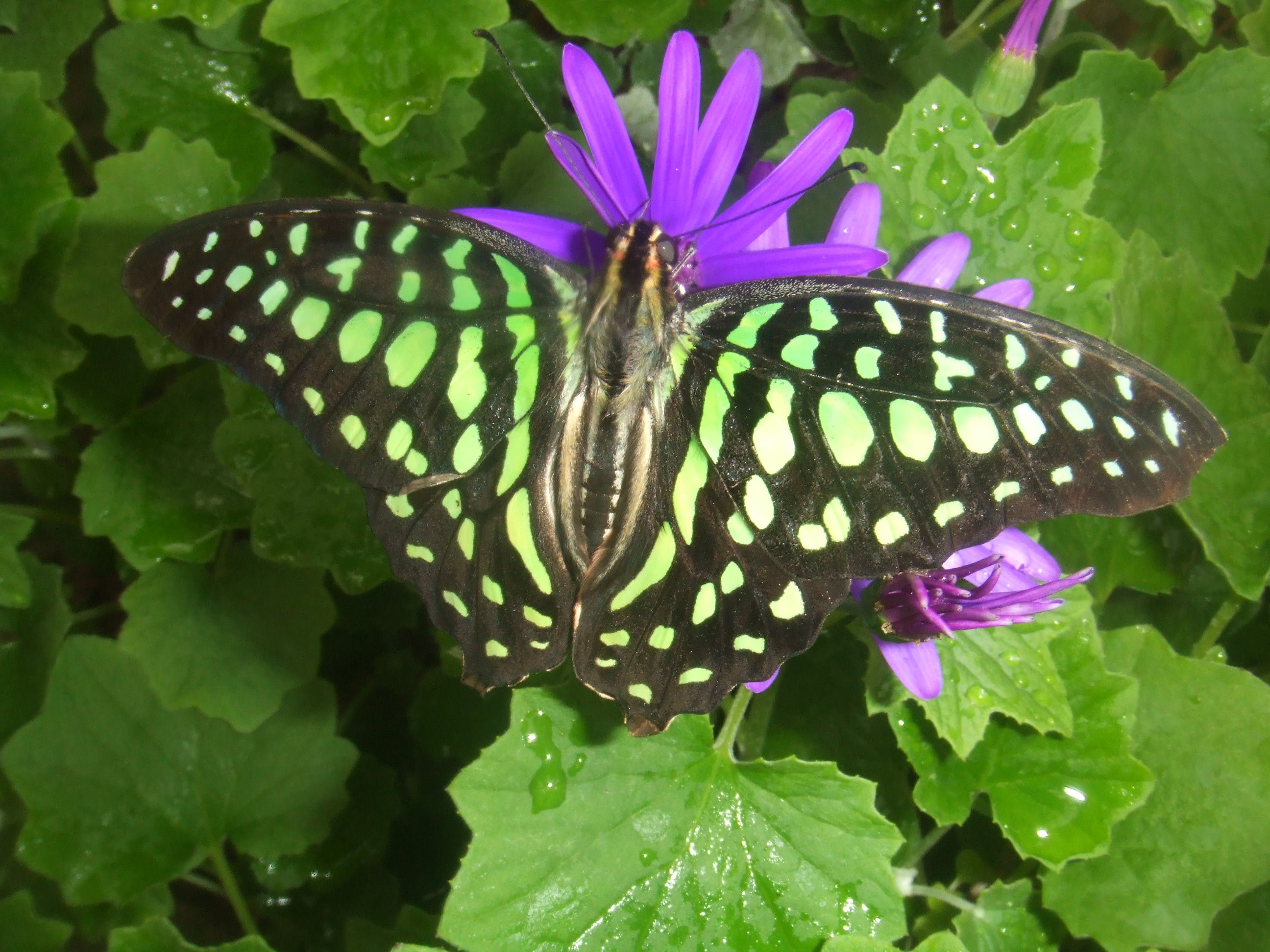|
Melitaea
''Melitaea'' is a genus of brush-footed butterflies (family (biology), family Nymphalidae). They are here placed in the tribe (biology), tribe Melitaeini of subfamily Nymphalinae; some authors elevate this tribe to subfamily rank. As delimited here, ''Melitaea'' includes the genus ''Mellicta'', making the subtribe Melitaeina monotypic (but see below). For long, it was believed that ''Mellicta'' was a junior objective synonym of ''Melitaea'', sharing the same type species (the Glanville fritillary, ''M. cinxia''). This was in error, however; the type species of ''Mellicta'' is actually the heath fritillary (''M. athalia''), making the two taxa junior subjective synonyms and thus eligible to be separated again. However, several other taxa are in fact objective synonyms (or at least have type specimens belonging to the same biological species) of ''Melitaea'' and ''Mellicta'' – ''Schoenis'' and the junior homonym, preoccupied ''Lucina'' and ''Melinaea'' for the former, ''Athaliae ... [...More Info...] [...Related Items...] OR: [Wikipedia] [Google] [Baidu] |
Melitaea Punica - Seitz
''Melitaea'' is a genus of brush-footed butterflies (family Nymphalidae). They are here placed in the tribe Melitaeini of subfamily Nymphalinae; some authors elevate this tribe to subfamily rank. As delimited here, ''Melitaea'' includes the genus ''Mellicta'', making the subtribe Melitaeina monotypic (but see below). For long, it was believed that ''Mellicta'' was a junior objective synonym of ''Melitaea'', sharing the same type species (the Glanville fritillary, ''M. cinxia''). This was in error, however; the type species of ''Mellicta'' is actually the heath fritillary (''M. athalia''), making the two taxa junior subjective synonyms and thus eligible to be separated again. However, several other taxa are in fact objective synonyms (or at least have type specimens belonging to the same biological species) of ''Melitaea'' and ''Mellicta'' – ''Schoenis'' and the preoccupied ''Lucina'' and ''Melinaea'' for the former, ''Athaliaeformia'' for the latter. Taxonomy As noted ... [...More Info...] [...Related Items...] OR: [Wikipedia] [Google] [Baidu] |
Glanville Fritillary
The Glanville fritillary (''Melitaea cinxia'') is a butterfly of the family Nymphalidae. It is named for Eleanor Glanville, the naturalist who discovered it, and the checkerboard pattern on its wings. These butterflies live in almost all of Europe, especially Finland, and in parts of northwest Africa. They are absent from the far north of Europe and parts of the Iberian Peninsula. To the east they are found across the Palearctic (in Turkey, Russia, northern Kazakhstan, and Mongolia). It has been discovered that this butterfly only mates one time in June or July and lays its eggs. It does not provide any protection to these eggs or care for the offspring. As adults, the Glanville fritillaries are short-lived; they spend most of their lives as caterpillars. As caterpillars, Glanville fritillaries enter a stage of diapause, which is a period of suspended development, during the winter time. The spiked speedwell and ribwort plantain are the Glanville fritillary's preferred plants ... [...More Info...] [...Related Items...] OR: [Wikipedia] [Google] [Baidu] |
Papilio Cinxia
The Glanville fritillary (''Melitaea cinxia'') is a butterfly of the family Nymphalidae. It is named for Eleanor Glanville, the naturalist who discovered it, and the checkerboard pattern on its wings. These butterflies live in almost all of Europe, especially Finland, and in parts of northwest Africa. They are absent from the far north of Europe and parts of the Iberian Peninsula. To the east they are found across the Palearctic (in Turkey, Russia, northern Kazakhstan, and Mongolia). It has been discovered that this butterfly only mates one time in June or July and lays its eggs. It does not provide any protection to these eggs or care for the offspring. As adults, the Glanville fritillaries are short-lived; they spend most of their lives as caterpillars. As caterpillars, Glanville fritillaries enter a stage of diapause, which is a period of suspended development, during the winter time. The spiked speedwell and ribwort plantain are the Glanville fritillary's preferred plants t ... [...More Info...] [...Related Items...] OR: [Wikipedia] [Google] [Baidu] |
Melitaea Arcesia Chuana
''Melitaea arcesia'', the blackvein fritillary, is a butterfly of the family Nymphalidae. It is found from southern Siberia and Transbaikalia to the Amur region, Mongolia and China. The habitat consists of steppe In physical geography, a steppe () is an ecoregion characterized by grassland plains without closed forests except near rivers and lakes. Steppe biomes may include: * the montane grasslands and shrublands biome * the tropical and subtropica ...-clad slopes. Adults are on wing from June to August. Subspecies *''Melitaea arcesia arcesia'' (Transbaikalia) *''Melitaea arcesia minor'' Elwes, 1899 (Altai) *''Melitaea arcesia chuana'' Grum-Grshimailo, 1893 *''Melitaea arcesia sikkimensis'' Moore, 1901 (India) *''Melitaea arcesia carmana'' Fruhstorfer, 1915 (Sayan) *''Melitaea arcesia rucephala'' Fruhstorfer, 1915 (Tian Shan Mountains) References Butterflies described in 1861 Melitaea Butterflies of Asia Taxa named by Otto Vasilievich Bremer {{Nymphalinae ... [...More Info...] [...Related Items...] OR: [Wikipedia] [Google] [Baidu] |
Melitaeini
Melitaeini are a group of brush-footed butterflies. Usually classified as a tribe of the Nymphalinae, they are sometimes raised to subfamily status as Melitaeinae. Common names include the highly ambiguous fritillaries (also used for some Heliconiinae), checkerspots, crescents, or crescentspots, and some genus-specific names. Genera The 20–25 genera of Melitaeini are divided among five subtribes; some species are also listed. The subtribes, in the presumed phylogenetic sequence, are:See references in Savela (2010) Subtribe Euphydryina * ''Euphydryas'' – fritillaries, checkerspots Subtribe Melitaeina * '' Melitaea'' – fritillaries (including ''Didymaeformis'', ''Mellicta'') Subtribe Chlosynina * '' Antillea'' Higgins, 959/small> * '' Atlantea'' Higgins, 959/small> * '' Chlosyne'' – checkerspots, patches * '' Dymasia'' Higgins, 1960 * '' Higginsius'' Hemming, 1964 (tentatively placed here; Gnathotrichina?) * ''Microtia'' Bates, 1864 * '' Poladryas'' Ba ... [...More Info...] [...Related Items...] OR: [Wikipedia] [Google] [Baidu] |
Lepidoptera In The 10th Edition Of Systema Naturae
In the 10th edition of ''Systema Naturae'', Carl Linnaeus classified the arthropods, including insects, arachnids and crustaceans, among his class "Insecta". Butterfly, Butterflies and moths were brought together under the name Lepidoptera. Linnaeus divided the group into three genera – ''Papilio'', ''Sphinx'' and ''Phalaena''. The first two, together with the seven subdivisions of the third, are now used as the basis for nine superfamily names: Papilionoidea, Sphingoidea, Bombycoidea, Noctuoidea, Geometroidea, Tortricoidea, Pyraloidea, Tineoidea and Alucitoidea. Themes When naming the nearly 200 species of butterflies known to him at the time, Linnaeus used names from classical mythology as specific name (zoology), specific names. These were thematically arranged into six groups, and were drawn from classical sources including the ''Fabulae'' of Gaius Julius Hyginus and Pliny the Elder's ''Natural History (Pliny), Naturalis Historia''. The first such group was the ''Equites'', ... [...More Info...] [...Related Items...] OR: [Wikipedia] [Google] [Baidu] |
Subgenus
In biology, a subgenus ( subgenera) is a taxonomic rank directly below genus. In the International Code of Zoological Nomenclature, a subgeneric name can be used independently or included in a species name, in parentheses, placed between the generic name and the specific epithet: e.g. the tiger cowry of the Indo-Pacific, ''Cypraea'' (''Cypraea'') ''tigris'' Linnaeus, which belongs to the subgenus ''Cypraea'' of the genus ''Cypraea''. However, it is not mandatory, or even customary, when giving the name of a species, to include the subgeneric name. In the International Code of Nomenclature for algae, fungi, and plants The ''International Code of Nomenclature for algae, fungi, and plants'' (ICN or ICNafp) is the set of rules and recommendations dealing with the formal botanical names that are given to plants, fungi and a few other groups of organisms, all tho ... (ICNafp), the subgenus is one of the possible subdivisions of a genus. There is no limit to the number of divisio ... [...More Info...] [...Related Items...] OR: [Wikipedia] [Google] [Baidu] |
Monotypic
In biology, a monotypic taxon is a taxonomic group (taxon) that contains only one immediately subordinate taxon. A monotypic species is one that does not include subspecies or smaller, infraspecific taxa. In the case of genera, the term "unispecific" or "monospecific" is sometimes preferred. In botanical nomenclature, a monotypic genus is a genus in the special case where a genus and a single species are simultaneously described. Theoretical implications Monotypic taxa present several important theoretical challenges in biological classification. One key issue is known as "Gregg's Paradox": if a single species is the only member of multiple hierarchical levels (for example, being the only species in its genus, which is the only genus in its family), then each level needs a distinct definition to maintain logical structure. Otherwise, the different taxonomic ranks become effectively identical, which creates problems for organizing biological diversity in a hierarchical syste ... [...More Info...] [...Related Items...] OR: [Wikipedia] [Google] [Baidu] |
Junior Homonym
In biology, a homonym is a name for a taxon that is identical in spelling to another such name, that belongs to a different taxon. The rule in the International Code of Zoological Nomenclature is that the first such name to be published is the senior homonym and is to be used (it is " valid"); any others are junior homonyms and must be replaced with new names. It is, however, possible that if a senior homonym is archaic, and not in "prevailing usage," it may be declared a '' nomen oblitum'' and rendered unavailable, while the junior homonym is preserved as a '' nomen protectum''. :For example: :* Cuvier proposed the genus ''Echidna'' in 1797 for the spiny anteater. :*However, Forster had already published the name ''Echidna'' in 1777 for a genus of moray eels. :*Forster's use thus has priority, with Cuvier's being a junior homonym. :* Illiger published the replacement name ''Tachyglossus'' in 1811. Similarly, the International Code of Nomenclature for algae, fungi, and plan ... [...More Info...] [...Related Items...] OR: [Wikipedia] [Google] [Baidu] |
Type Specimen
In biology, a type is a particular wikt:en:specimen, specimen (or in some cases a group of specimens) of an organism to which the scientific name of that organism is formally associated. In other words, a type is an example that serves to anchor or centralizes the defining features of that particular taxon. In older usage (pre-1900 in botany), a type was a taxon rather than a specimen. A taxon is a scientifically named grouping of organisms with other like organisms, a set (mathematics), set that includes some organisms and excludes others, based on a detailed published description (for example a species description) and on the provision of type material, which is usually available to scientists for examination in a major museum research collection, or similar institution. Type specimen According to a precise set of rules laid down in the International Code of Zoological Nomenclature (ICZN) and the ''International Code of Nomenclature for algae, fungi, and plants'' (ICN), the ... [...More Info...] [...Related Items...] OR: [Wikipedia] [Google] [Baidu] |







